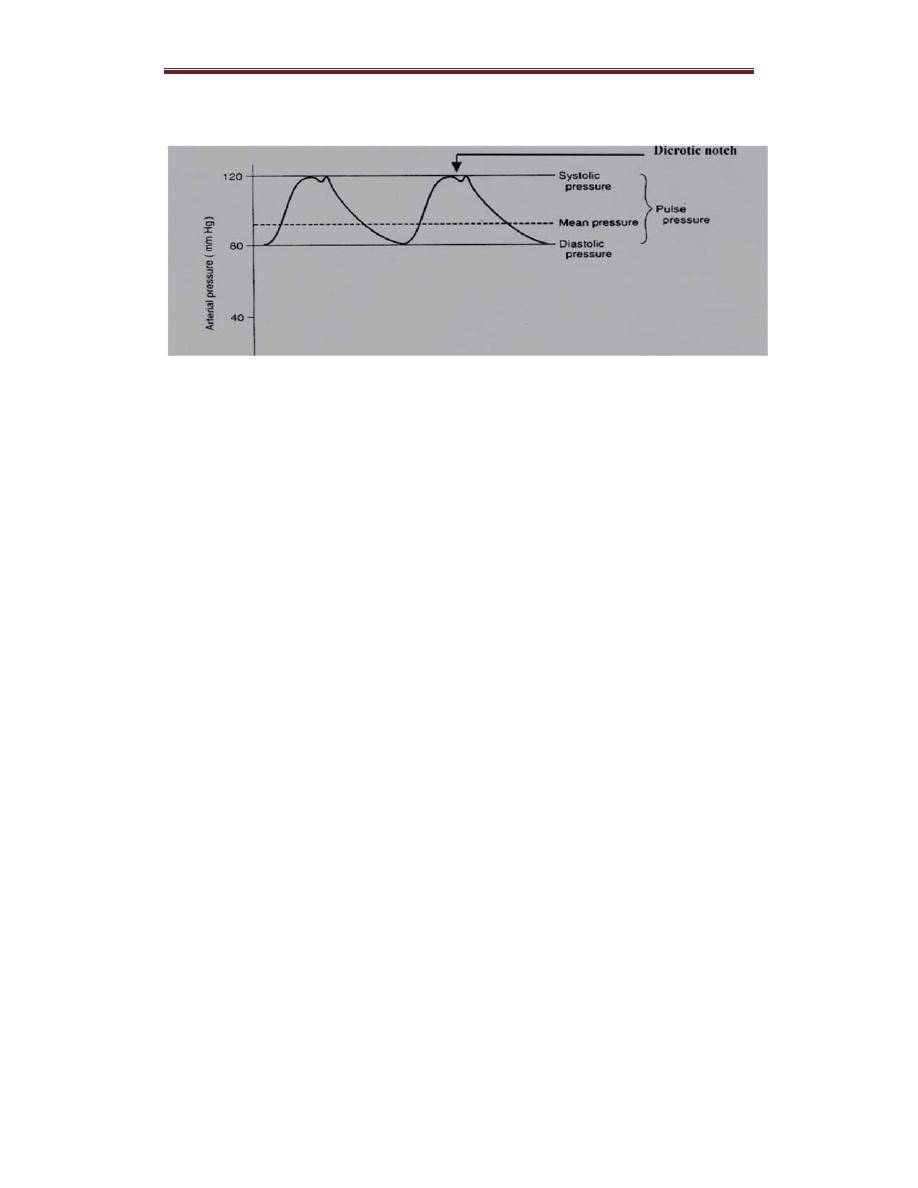
Dr. Zainab F. Hassan Lecture one
1
Arterial and venous blood Pressure
Arterial blood pressure
Arterial blood pressure: means the force exerted by the blood
against any unit area of the vessel wall. Blood pressure almost
always is measured in millimeters of mercury (mm Hg) because
the mercury manometer has been used as the standard reference
for measuring pressure. The pressure in the aorta and in the
brachial and other large arteries in a young adult human rises to
a peak value (systolic pressure) of about 120 mm Hg during
each heart cycle and falls to a minimum (diastolic pressure) of
about 70 mm Hg .
Systolic pressure is produced by ejection of blood into aorta
during left ventricular systole while diastolic pressure is
produced as a result of the elastic recoil of the aorta during
ventricular diastole. The arterial pressure is conventionally
written as systolic pressure over diastolic pressure, for example,
120/70 mm Hg.
arterial pressure is the product of the cardiac output and the
peripheral resistance, it is affected by conditions that affect
either or both of these factors.
BP=CO*PVR ( CO: cardiac output, PVR: peripheral vascular
resistance).
The mean pressure equals the diastolic pressure plus one-third
of the pulse pressure.
Mean BP=diastolic BP+1/3pulse pressure See figure 1.
The pulse pressure, the difference between the systolic and
diastolic pressures, is normally about 40 mm Hg.

Dr. Zainab F. Hassan Lecture one
2
Figure(1):Arterial blood pressure curve (Guyton & Hall 2006).
Methods of Measuring Blood Pressure:
1-Invasive method: a cannula is inserted into an artery, the
arterial pressure can be measured directly with a mercury
manometer or a suitably calibrated strain gauge.
2-Non
invasive
methods:
BP
measured
by
sphygmomanometer. It includes :
I-palpatory method: The cuff is wrapped around the arm .the
radial pulse is palpated then the cuff is inflated till the pulse
disappears which indicate complete obstruction of brachial
artery, then the cuff is slowly deflated till radial pulse becomes
palpable.by this methods only systolic BP is measured.
II-Auscultatory method: The arterial blood pressure in human
is routinely measured by the auscultatory method. An
inflatable
cuff
attached
to
a
mercury
manometer
(sphygmomanometer) is wrapped around the arm and a
stethoscope is placed over the brachial artery at the elbow. The
cuff is rapidly inflated until the pressure is well above the
expected systolic pressure in the brachial artery. The artery is
occluded by the cuff, and no sound is heard with the

Dr. Zainab F. Hassan Lecture one
3
stethoscope. The pressure in the cuff is then lowered slowly. At
the point at which systolic pressure in the artery just exceeds the
cuff pressure, a spurt of blood passes and certain sounds called
Korotkoff sounds are heard. The sounds of Korotkoff are
produced by changing laminar blood flow into turbulent flow in
the brachial artery.The first sound heard represent systolic
pressure(phase1 of Korotkoff sound). Then the sound becomes
louder,then dull, muffled and finally disappear. Diastolic
pressure represented when the sound disappears.
Phases of Korotkoff sounds are:
- Phase1, tapping sound.
-Phase2, louder sound.
-Phase3,dull.
-Phase4, muffled sound.
-Phase5, disappeared.
In hyper dynamic conditions (e.g) pregnancy, children, and
some disease conditions (e.g) hyperthyriodisim ,aortic
insufficiency ,diastolic blood pressure represented by phase4.
